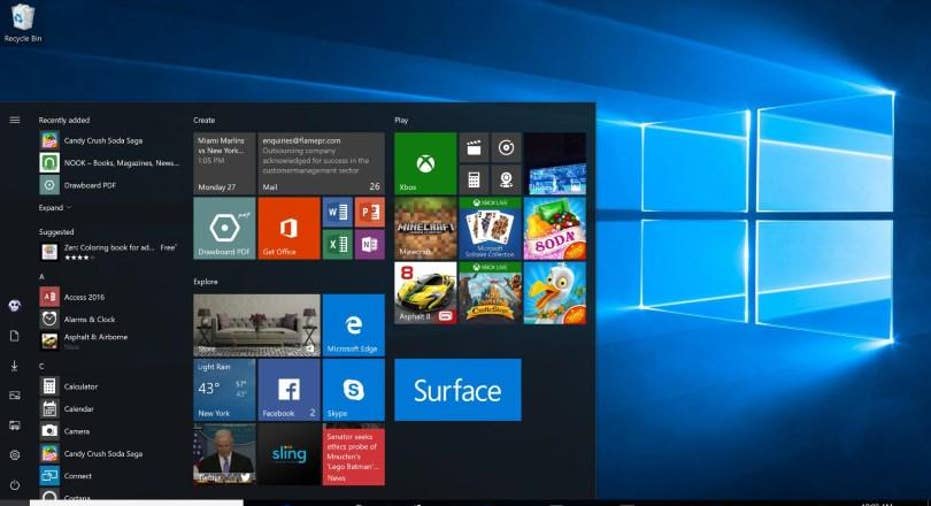How Microsoft's Windows 10 Privacy Update Could Impact You

Windows Insider Program participants will now be able to view and manage their Microsoft accounts via a newly released, diagnostics-based privacy dashboard.
Dubbed "The Windows Diagnostic Data Viewer," the new dashboard (which is still in beta) gives Microsoft Windows 10 users the ability to see, search, and make changes to diagnostic data associated with their accounts.
For example, users will be able to monitor the different Windows 10 operating systems associated with the account, including which version of the OS is installed, on which devices the OS is installed, and how the devices are performing—both from a network management and a physical hardware perspective.
This dashboard gives families and small businesses the ability to monitor their Microsoft account for deviations from normal performance. Say, for example, that your account is being accessed by a device in a foreign country to which you've never traveled. The dashboard lets you proactively disable the account or contact Microsoft to further investigate; the same can be said for unknown Wi-Fi and Bluetooth connections.
The Windows Diagnostic Data Viewer also provides some oversight into which applications, services, settings, and preferences have been installed on the device. Users will see a list of the characteristics and can take appropriate action if something appears to be amiss. All features and data listed in the dashboard can be searched and filtered to provide users with a more streamlined approach to investigating.
"We believe in the timeless value of privacy. We are on a journey with our customers and fully committed to putting them in control of their data, and providing the information they need to make informed decisions about their privacy," said Marisa Rogers, Windows & Devices Group (WDG) Privacy Officer at Microsoft.
"The Diagnostic Data Viewer is the next step in helping customers and customer advocates verify the commitments in our online documentation," Rogers continued. "The Activity History in the dashboard provides a new aggregated view of the data associated with a customer's Microsoft account. We will continue to listen to input from our customers and customer advocates to refine privacy experiences for our customers."
Microsoft Privacy Dashboard
The company also added new features to its pre-existing Microsoft Privacy Dashboard. Users can now view and manage data consumption on the same page as product and service activity. This gives users an easier way to compare and contrast normal usage versus anomalies within the system (as opposed to tabbing back and forth between pages).
Also, any data within the dashboard can be exported from the account for offline viewing. Users can even delete specific items from the dashboard should their media consumption cause a bit of embarrassment with family members or co-workers.
Microsoft's Data Collection
Microsoft has traditionally collected diagnostic data to ensure OSes are functioning properly, both from a performance and security perspective. In addition to the data referenced above, Microsoft also collects browsing history, inking, typing, and speech utterance data. With this week's releases, Microsoft wants you to be able to see and proactively monitor this data on your end as well, according to a company statement.
Earlier this month, Microsoft announced it would add additional privacy settings to the Microsoft Windows 10 Creators Update setup experience (scheduled for this spring). With the changes, users will be presented with a full-page screen that will give them the option to turn off location- and speech-based services, diagnostics reporting, and personalized advertising. Late last year, Microsoft updated the Windows Defender Security Center to provide diagnostic abilities, endpoint protection, parental controls, SmartScreen Filter, and Windows Firewall.
Of course, most of the privacy controls Microsoft currently enables come as the result of loud and consistent protests by users, government agencies, and consumer rights groups about data collection and user privacy. In years past, the Electronic Frontier Foundation (EFF) has argued that Microsoft was aggressive in pushing Microsoft Windows 10 on users in order to collect more data than the company had with previous OSes.
"Microsoft should come clean with its user community. The company needs to acknowledge its missteps and offer real, meaningful opt-outs to the users who want them, preferably in a single, unified screen. It also needs to be straightforward in separating security updates from operating system upgrades going forward and not try to bypass user choice and privacy expectations," Amul Kalia, Analyst and Intake Coordinator at the EFF, wrote in an August 2016 blog post.
The EFF has not yet returned our request for comment. However, this week's releases appear to have directly and indirectly addressed the organization's specific issues.
This article originally appeared on PCMag.com.